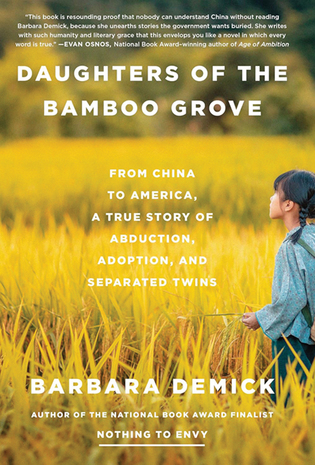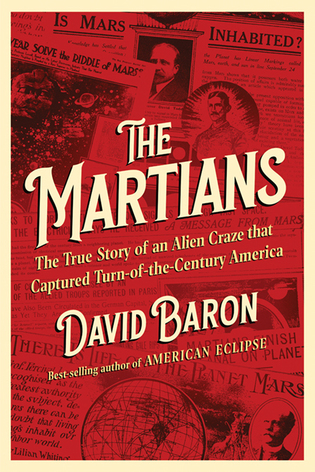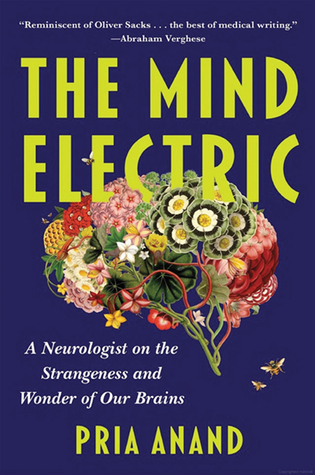
Daughters of the Bamboo Grove: From China to America, a True Story of Abduction, Adoption, and Separated Twins
Barbara Demick ’80
Random House, $32
Reviewed by Cathy Shufro
One ordinary spring day in 2002, in the mountains of China’s Hunan Province, strangers burst into a house where two boys were babysitting their toddler cousin, Fangfang. When the boys spotted the intruders’ expensive leather shoes, they knew the men were civil servants. The boys grabbed Fangfang and fled to the forest.
The government officials came for Fangfang because her birth had violated China’s one-child policy; her parents already had two children. The men returned. They pried the screaming toddler from her screaming aunt.
In her compelling narrative, Daughters of the Bamboo Grove, journalist Barbara Demick ’80 uses Fangfang’s kidnapping as a case study in a larger examination of the political, cultural, and economic landscape of the one-child policy. The policy was instituted nationwide in 1980 and repealed in 2015; during that period, Westerners adopted 160,000 Chinese-born children.
Adoption wasn’t the plan for Fangfang: After her mother gave birth to her—and an identical twin—relatives agreed to hide Fangfang in their village.
Demick recounts how, like thousands of “over-quota” children, Fangfang fell victim to a scheme for “creating orphans.” Although Fangfang’s parents quickly located their daughter in an orphanage, they couldn’t pay the gargantuan fine required to claim her. Next, Family Planning officials lied to the Americans who wanted to adopt Fangfang, claiming that she’d been abandoned at a factory gate, her parents unknown. Like many well-meaning Westerners, Fangfang’s new parents unknowingly adopted a stolen child.
Creating orphans was profitable. By 2012, the Chinese government had collected an estimated $314 billion in mandatory “donations” from adoptive families, combined with fines paid by parents of out-of-plan children.
Demick first met Fangfang’s bereft parents and her twin, Shuangjie, while reporting in China for the Los Angeles Times. In the book, Demick tells the extraordinary story of how she tracked down Fangfang—by then a thriving Texas teenager named Esther. In 2017, Demick reconnected the twins.
The reunion provides no fairy-tale ending. But Demick reports that in Hunan as in Texas, the separated sisters are beloved. We see Esther and Shuangjie embarking on adult lives full of promise.
Cathy Shufro teaches writing at Yale.
__________________________________________________________________

The Martians: The True Story of an Alien Craze that Captured Turn-of-the-Century America
David Baron ’86
Farrar, Straus and Liveright, $29.99
Reviewed by Alex Beam ’75
It’s delightful to read a book in which the author seems to be having fun. That would certainly describe David Baron’s The Martians, a brisk and informative account of the quarter-century-long Mars frenzy—a “love story” as Baron calls it—that mesmerized America starting in the 1890s. Until powerful telescopes demystified our nearest planetary neighbor, Mars was the imagined Brave New World upon which mankind’s fears, desires, and manias were projected.
Baron, a veteran science writer, has an enviable cast of characters: H. G. Wells, whose fictional Martians invaded Earth in his 1897 novel The War of the Worlds; the neurasthenic Boston Brahmin Percival Lowell, a diehard propagandist for the chimerical Martian canals; and the moody Serbian genius Nikola Tesla, who occasionally sallies forth from his lodgings at the Waldorf-Astoria hotel to try to communicate with the Red Planet.
Lowell’s canal obsession is a recurring theme in the book. He spun what he thought were straight lines on the Martian surface into an elaborate theory of a civilization channeling water into oases for agricultural use. “Irrigation,” he wrote, “must be the all-engrossing Martian pursuit.” One of his scientific allies, a “canalist,” as opposed to the rival “anti-canalists,” opined that “the Minister of Agriculture orders the highest locks to be opened and fills the two upper canals with water.”
The legend of the canals and the canal keepers endured, until it didn’t. Even when more sophisticated observers with stronger telescopes attacked his findings, Lowell ceded no ground: “It is not me who makes lines on Mars, it is the Martians,” he wrote to a friend. “What happened on Earth always seemed to be projected onto Mars,” Baron writes. “Part of what made the Martians so appealing was their relatability. They were us, only better—wiser, more peaceful, more moral.” Baron has written a Goldilocks narrative, not too long, not too short—just right. All in all, a delectable Martian chronicle.
Alex Beam ’75 is a Boston-based writer.
__________________________________________________________________

The Mind Electric: A Neurologist on the Strangeness and Wonder of Our Brains
Pria Anand ’10
Simon and Schuster, $28.99
Reviewed by Anna Reisman ’86
Anand sheds light on the misinterpretation of women’s neurological symptoms throughout history. There is the young woman with sudden blindness who believes it divine punishment for a forbidden kiss (diagnosis: mononucleosis). There is Lidwina of Schiedam, a fourteenth-century Dutch saint, with pain and symptoms that seem to come and go randomly: “Her right arm became paralyzed, then mobile, her right eye blind, then sight restored.” While Lidwina and her physicians were certain she had been chosen to suffer for humanity’s sins, an examination of her exhumed body in 1947 revealed evidence of, most likely, multiple sclerosis.
Anand introduces us to conditions like the “agnosias,” disorders that can cause people to stop recognizing friends, family, and ordinary things. Those with anosognosia lack recognition of their own deficits. With simultanagnosia, a person cannot visualize multiple things at the same time. Anand recounts the story of a seamstress who could no longer work: she could focus on the needle, or the thread, but not both at once.
As a narrator, Anand deftly relates such complicated brain activities as the auditory hallucinations before a seizure. Of her misery during childbirth, she writes of “a fleeting glimpse into the loneliness of pain, into the experience of being subsumed by a pain in a room full of people who are as removed from your pain as the cosmologists gazing through the telescope.” Anand isn’t merely interested in the intriguing manifestations of neurological diseases, but just as much in the lived experience of those enduring them, not least herself.
Primary care physician Anna Reisman ’86 directs Yale’s Program for Humanities in Medicine.
 loading
loading

